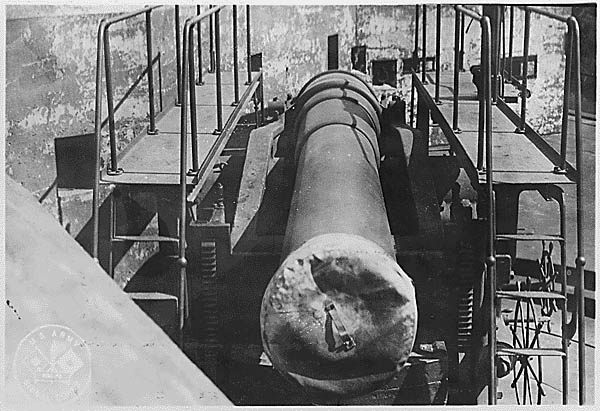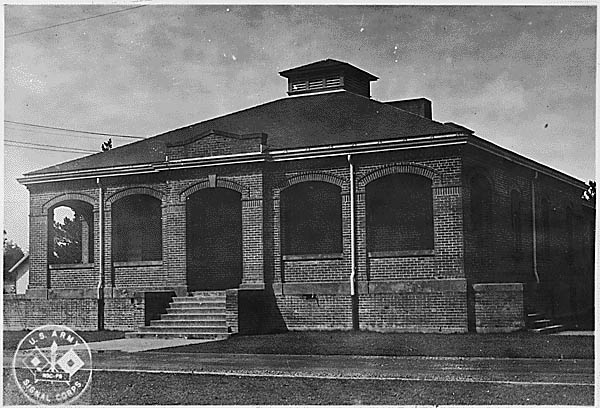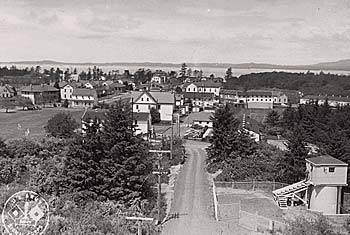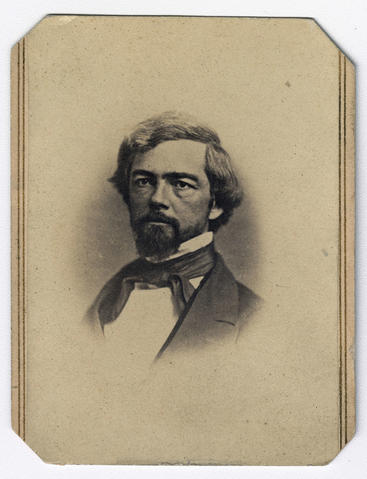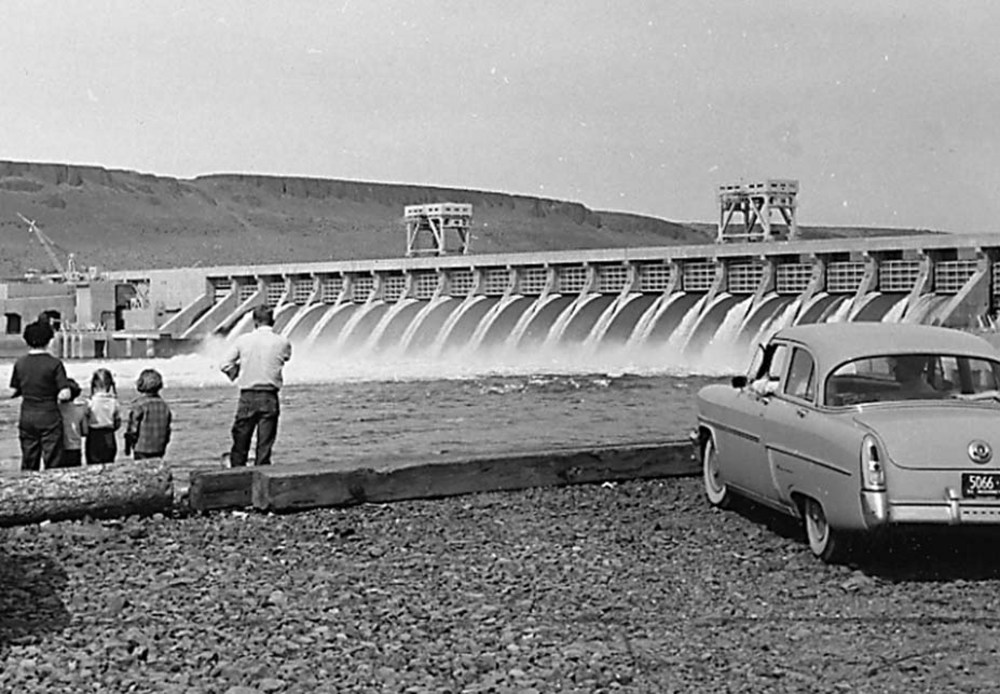One of the three major forts designed to protect the mouth of the Columbia River, Fort Stevens was constructed on the Oregon side of the river's mouth. The three forts—Fort Stevens, and, in Washington, Forts Columbia and Canby—were authorized by an act of Congress in February 1862 to provide "for the defense in Oregon and Washington Territory at or near the mouth of the Columbia River." While the original purpose was to protect the river from Confederate commerce raiders (such as the C.S.S. Alabama), the Civil War was over before Fort Stevens was fully operational. Fort Stevens was named for a former governor and congressional delegate of Washington Territory, Isaac I. Stevens , who was killed in 1862 at the battle of Chantilly. Stevens had been a popular figure in the Pacific Northwest, and the naming of the fort was seen as a fitting tribute.
After the Civil War, Congress reduced the army's budget. At Fort Stevens that meant funding maintenance, some construction, and a small resident military force. In 1884-1898, the Army Corps of Engineers took over Fort Stevens to use as a base for its work to improve the Columbia River Channel. It was not until 1896 that the U.S. Army began to expand and modernize Fort Stevens as a coastal defense installation. The last of the concrete gun emplacements, Battery Russell, was completed in 1904.
Fort Stevens saw no combat during World War I, and its cannons were fired only in practice or when rendering honors to visiting warships, such as French cruiser Jeanne d’Arc and German cruisers Karlsruhe and Emden in the 1930s.
The fort was the home of the 18th Coast Artillery Regiment, augmented by the Oregon National Guard’s 249th Coast Artillery Regiment, which trained at the fort during each summer's muster and on weekend duty throughout the year. When President Franklin Roosevelt federalized the National Guard in September 1940, the 249th reported to the three Columbia River forts, where they provided support for the 18th Coast Artillery Regiment as it was transferred, a battery (company) at a time, to more active duty. Despite several submarine attacks at the mouth of the Columbia River in December 1941, Fort Stevens’ guns remained silent. Twice the Japanese submarine I-25 attacked oil tankers at or near the mouth of the Columbia, damaging the tanker S.S. Connecticut by torpedoing the empty oiler.
The most significant event in the fort’s history took place on the night of June 21, 1942, when the I-25, under the command of Commander Tagami, opened fire on Fort Stevens with its 5.5 deck gun. Seventeen shells landed on the military reservation without causing significant damage, and once more the fort’s guns remained silent—among other reasons, the submarine was believed to be out of range. Fort Stevens was the only military installation in the contiguous United States to be shelled by a foreign enemy warship since the War of 1812. A stone monument south of Battery Russell commemorates the event.
After its decommissioning in 1947, Fort Stevens is now one of the most popular units of the Oregon State Parks and Recreation Department and is listed on the National Register of Historic Places. Preserved on the grounds are parts of the fort, a museum, and reconstructed earth ramparts of the Civil War fort. The campgrounds and beautiful beaches belie the fort’s place in history. It has been the scene of shipwrecks and enemy ships shelling bucolic shores, but its main historical significance was as an active military installation defending the Great River of the West.
-
![Fort Stevens, 1945]()
Fort Stevens, 1945.
Fort Stevens, 1945 Courtesy National Archives, 40-0655a
-
![10-inch gun at Fort Stevens, 1945]()
10-inch gun at Fort Stevens, 1945.
10-inch gun at Fort Stevens, 1945 Courtesy National Archives, 40-0680a
-
![Guard House, 1945]()
Guard House, 1945.
Guard House, 1945 Courtesy National Archives, 40-0654a
-
![Fort Stevens entrance, 1938]()
Fort Stevens entrance, 1938.
Fort Stevens entrance, 1938 Courtesy Oregon State Univ. Libraries
-
![Aftermath of submarine attack]()
Aftermath of submarine attack.
Aftermath of submarine attack Courtesy National Archives, ARC299678
-
![Fort Stevens, 1942]()
Fort Stevens, 1942.
Fort Stevens, 1942 Courtesy National Archives, ARC299673
Related Entries
-
![Columbia River]()
Columbia River
The River For more than ten millennia, the Columbia River has been the…
-
![Isaac Ingalls Stevens (1818-1862)]()
Isaac Ingalls Stevens (1818-1862)
Isaac Stevens strode through the Northwest's formative years (1853-1861…
-
![The Beach Patrol in Oregon, U.S. Coast Guard, 1942-1944]()
The Beach Patrol in Oregon, U.S. Coast Guard, 1942-1944
The Beach Patrol in Oregon, which kept watch over the Oregon coastline …
-
![U.S. Army Corps of Engineers]()
U.S. Army Corps of Engineers
The U.S. Army Corps of Engineers, a hybrid military and civilian federa…
Related Historical Records
Map This on the Oregon History WayFinder
The Oregon History Wayfinder is an interactive map that identifies significant places, people, and events in Oregon history.
Further Reading
Coyle, Brendan. War on Our Doorstep, The Unknown Campaign on North America’s West Coast. Surry, B.C.: Heritage House Publishing, 2002.
Hanft, Marshall. The Cape Forts, Guardians of the Columbia. Portland: Oregon Historical Society Press, 2003.
Webber, Bert. Panic at Fort Stevens. Japanese Navy Shells Fort Stevens, Oregon in World War-II. Medford, Ore.: Webb Research Group Publishing, 1998.


